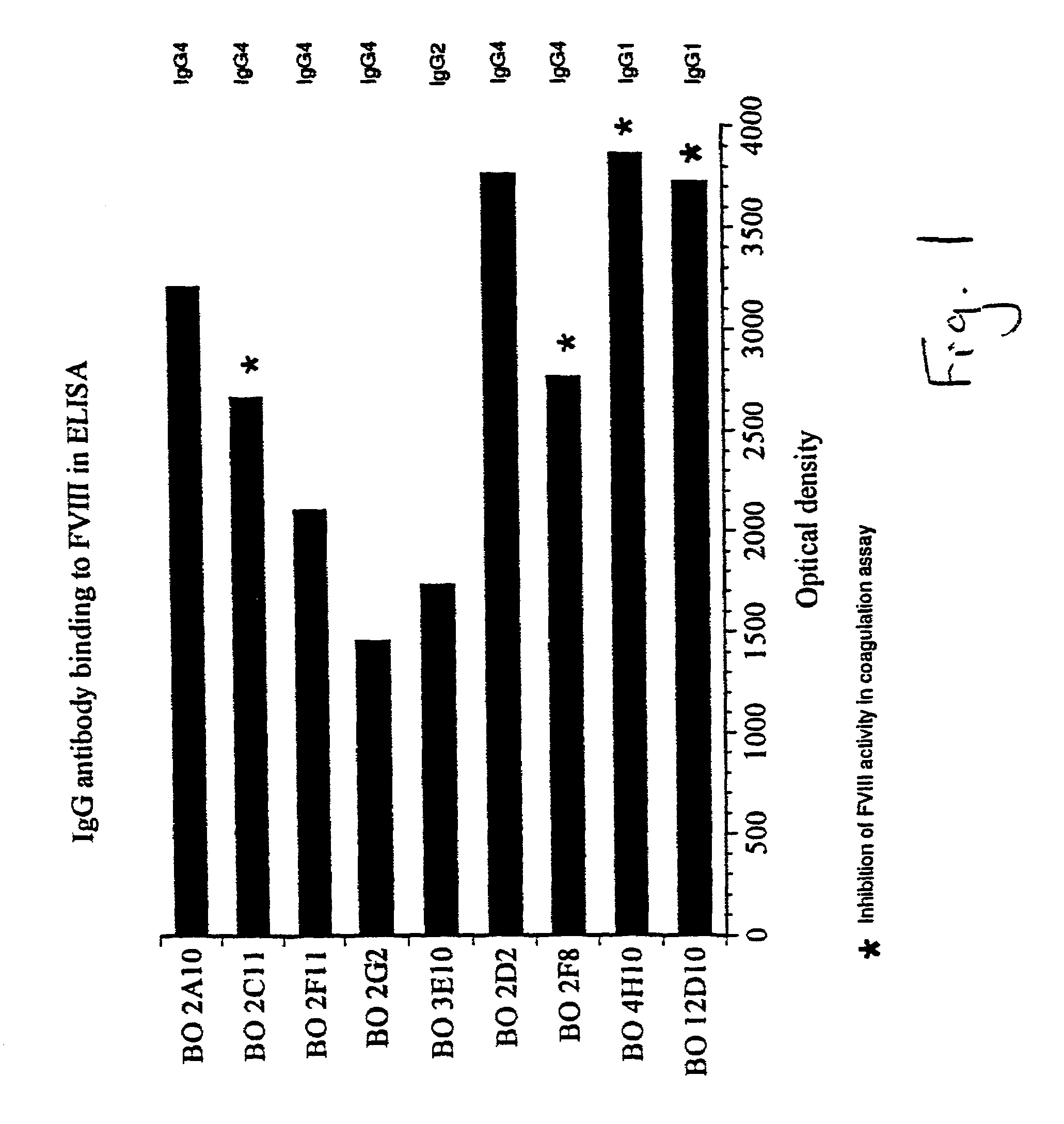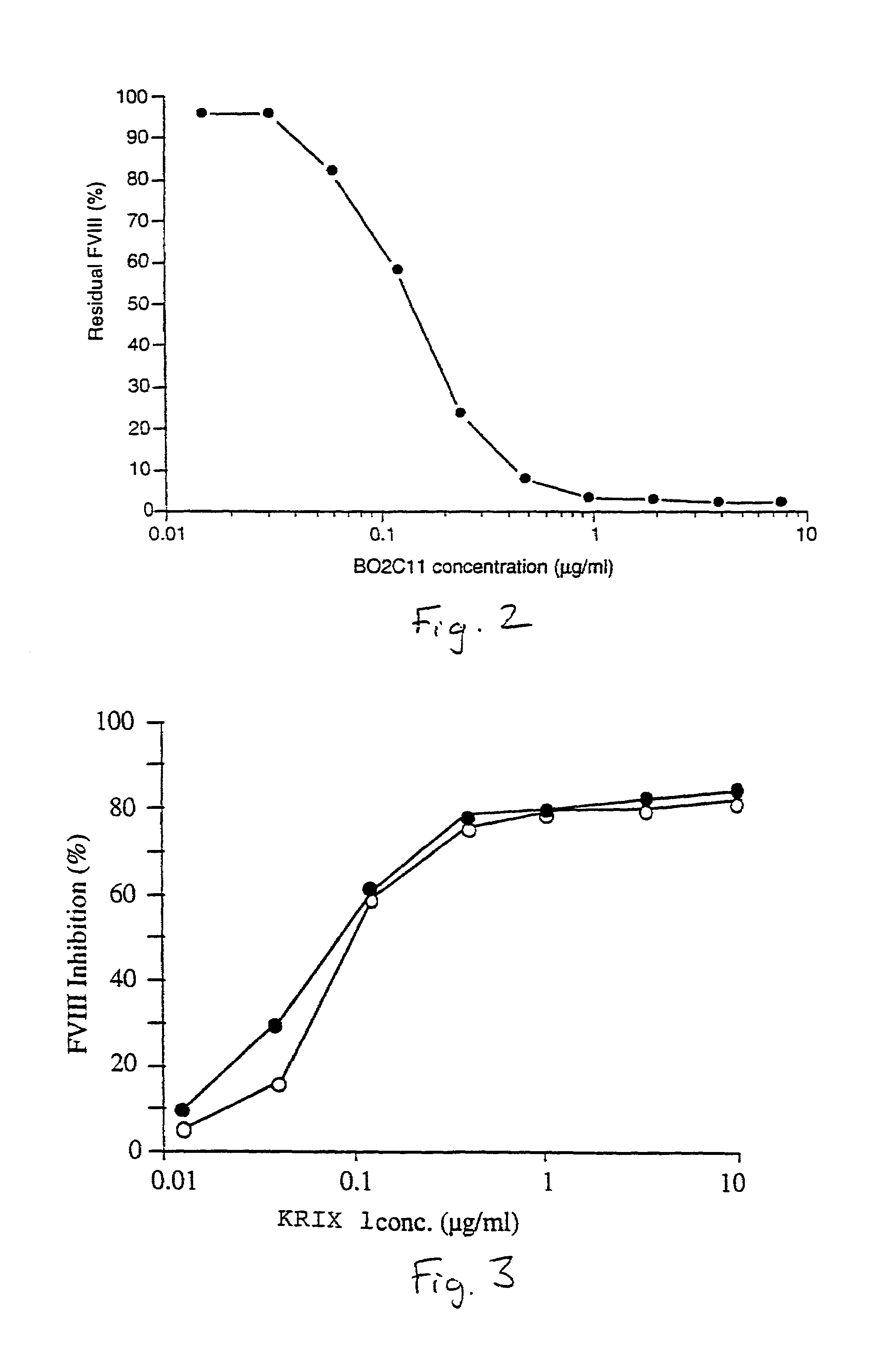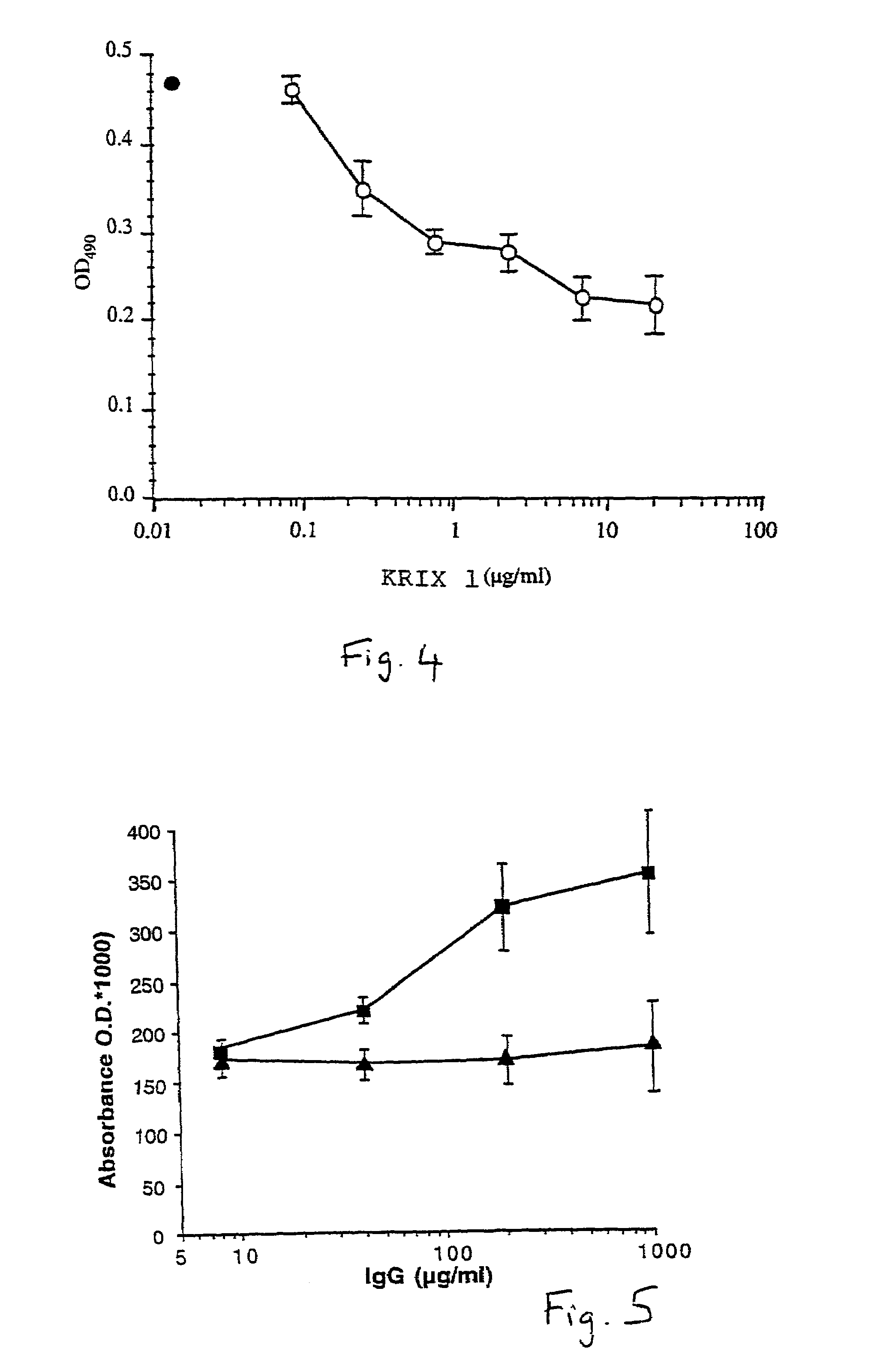Ligands for use in therapeutic compositions for the treatment of hemostasis disorders
- Summary
- Abstract
- Description
- Claims
- Application Information
AI Technical Summary
Benefits of technology
Problems solved by technology
Method used
Image
Examples
example 1
Production of Monoclonal Antibodies Derived from Hemophilia A Patients
[0084]Human monoclonal antibodies of the desired specificity and characteristics are produced by transformation of B lymphocytes obtained from the peripheral blood of patients suffering from hemophilia A or acquired hemophilia. The method of selecting patients is an embodiment of the present invention. In order to elicit a more specific immunological response, patients are sought who have an impaired function of a physiologically active protein, e.g. factor VIII. By “impaired” is meant that some residual function is available but that this is less than is known for the wild-type of the same protein. A comparison between the self-protein and the wild-type protein should exhibit a difference in the two proteins, preferably in a region or domain which is of interest. The difference may be a deletion or a substitution of one or more amino acids with others. The patients are then administered enough of the wild-type pr...
example 2
Production of Monoclonal Antibodies by Immunization in Animals
[0097]Alternatively, monoclonal antibodies having the same characteristics as disclosed in example 1 can be produced by on purpose immunization in animals. Thus, mice are injected with human factor VIII in Freund's adjuvant
[0098]Monoclonal anti-human factor VIII antibodies are then obtained by fusion of spleen lymphocytes with a mouse myeloma cell line. Cell culture supernatants producing anti-factor VIII antibodies are identified and cloned by limiting dilution, using methods described in Current Protocols in Immunology (see supra). Further selection of inhibitors having the desired capacity to inhibit the pro-coagulant activity of factor VIII is carried out as described in example 1.
[0099]Monoclonal antibodies produced in mice are then humanized. Thus, sequences of the variable parts of mouse heavy and light chains are aligned with human immunoglobulin variable regions to identify human antibody with the greatest homolo...
example 3
Characterization of Anti-Factor VIII Antibodies
[0100]Monoclonal antibodies of either human (example 1) or animal (example 2) origin are characterized using an assay system by which their capacity to inhibit the binding of factor VIII to phospholipids is evaluated. Thus, polystyrene microtitration plates are coated with phosphatidyl-L-serine. Soluble recombinant factor VIII at 2 microgr / ml final concentration is mixed for 30 minutes at 37° C. with various concentrations of the antibody under evaluation. The mixture is then rapidly activated with thrombin and added to phosphatidyl-L-serine coated plates. The said plates were then incubated for two minutes at 21° C. and the binding of factor VIII was detected by addition of the anti-factor VIII A1 domain mAbF14A2, for two minutes, followed by a two minute incubation with HRP-conjugated goat anti-mouse Fc gamma. Results of this experiment are shown in FIG. 4 for the monoclonal antibody produced from the cell line KRIX 1. On the figure, ...
PUM
 Login to View More
Login to View More Abstract
Description
Claims
Application Information
 Login to View More
Login to View More - R&D
- Intellectual Property
- Life Sciences
- Materials
- Tech Scout
- Unparalleled Data Quality
- Higher Quality Content
- 60% Fewer Hallucinations
Browse by: Latest US Patents, China's latest patents, Technical Efficacy Thesaurus, Application Domain, Technology Topic, Popular Technical Reports.
© 2025 PatSnap. All rights reserved.Legal|Privacy policy|Modern Slavery Act Transparency Statement|Sitemap|About US| Contact US: help@patsnap.com



